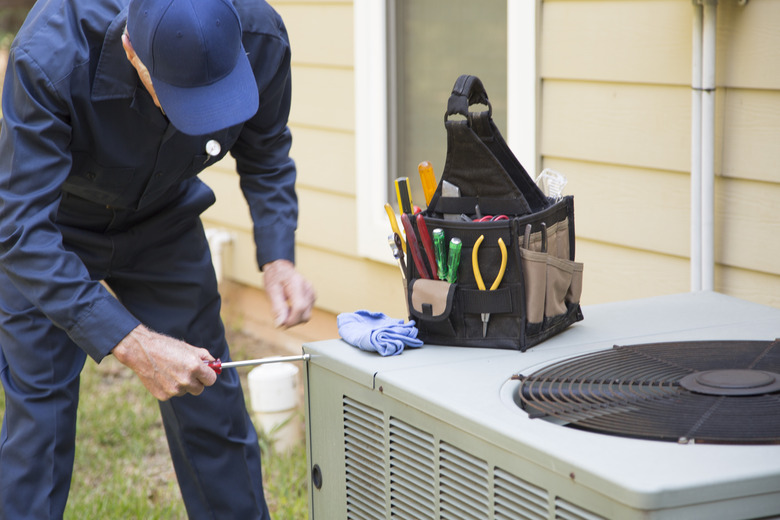How To Troubleshoot A Central Air Conditioner That Will Not Turn On
We may receive a commission on purchases made from links.
A central air conditioning system is the essential worker in your home. No matter where you live, comfort is key to making a house a home. When the central air conditioning system will not turn on, it can be very frustrating and even confusing. Knowing a few things to check before making the dreaded phone call to a professional can save you some money.
Check the Thermostat
Check the Thermostat
After reading your specific thermostat's operating manual, check to see if the batteries need to be replaced. This can be indicated by either a low-battery indicator or a blank screen. When in doubt, change the batteries.
Check the settings of your thermostat to be sure that it is set for cooling. Often, people overlook whether the desired settings are what they actually want them to be. Adjust the setting below the room's actual temperature. Don't be shy; crank it way down to test your central air conditioning system. With some thermostats, you actually hear a clicking noise when the system is told to start by the thermostat.
Check the Power Supply
Check the Power Supply
Sometimes, a power switch can be accidentally turned off. Look for your home's central air conditioner power supply and make sure all the switches are turned on. Check to ensure that the power at the unit itself is on. Look for a switch that should be mounted near the equipment. Check the circuit breakers (or fuses, if you have an old electrical panel) and make sure there are no tripped breakers (or blown fuses). Do not forget that a central AC system may have two separate breakers, one for the indoor unit and one for the outdoor unit.
It is not recommended that you open up the indoor or outdoor units. These are what house the main controls for the system, including high and low voltage power connections, fuses, and so forth. Opening it up to diagnose a power issue can cause a short, blowing a fuse or worse. This is where it may be time to call in the professional.
Don't Forget the Condensate Pump
Don't Forget the Condensate Pump
Some condensate pumps are wired to isolate the controls to the thermostat. If your thermostat is battery-operated, you may still have a reading on the screen of the thermostat, which can be very deceiving during this part of the diagnosis. If the condensate pump is full, then check into the reason why and make the appropriate corrections. Many times it can be as simple as clearing the drain line to and from the pump itself.
What if All the Power Is On?
What if All the Power Is On?
After ensuring the power supply isn't the problem, one commonly overlooked and simple item is the air filter of your furnace or indoor air handler. A dirty air filter can cause pressure fluctuations of your cooling system. If you have just recently changed air filters and used one with a high MERV rating (Minimum Efficiency Reporting Values), then the new filter can cause a higher-than-normal resistance, which also can cause pressure fluctuations. Either way replacing the air filter with one that is recommended by your HVAC technician or system manufacturer is beneficial and easy.
After checking the control system wiring, fuses, resets, and condensate pump, turn the power back on. You may get lucky, and the system will reset the controls and start up. Sometimes, a necessary reset is caused by a power fluctuation. If you still find yourself without cooling after trying these things, then it might be a good time to call in the professionals.
